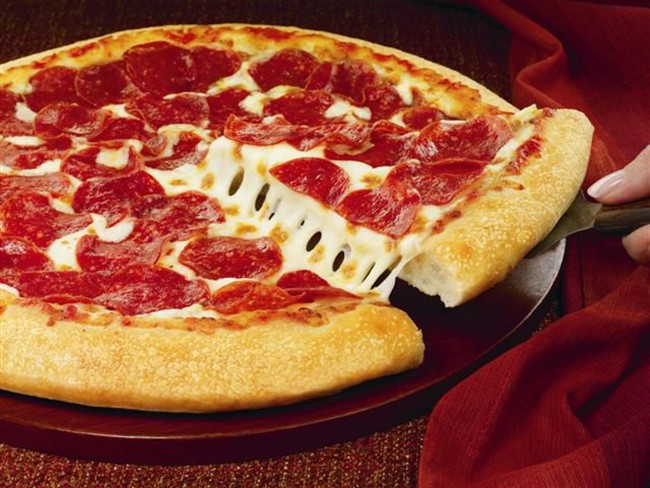TORONTO – You ate it at birthday parties, school lunches, and weekend dinner. Pizza is a classic staple food in childhood and now doctors are hoping to use the dish to teach kids about nutrition and healthy eating.

American researchers say that pizza is the second-highest source of calories in kids, next to cookies, cakes and sweets. The cheesy, portable food isn’t good for you – on the days teens graze on pizza, they eat an extra 365 calories.
READ MORE: This anti-obesity ad may scare parents into stashing the junk food away
“Not only is pizza one of the things children and teens eat most often, it is packing on extra calories, extra fat and extra sodium, or salt,” Dr. Lisa Powell, of the University of Illinois, told Healthline.
“If we could help kids eat less pizza, or help them eat healthier pizza, we could have a huge impact on their diet, their nutrition and their health,” Powell said. She suggests including it in nutritional counselling could be the start.
Powell’s study is based on data from a U.S. national health and nutrition survey that took a pulse of the eating habits of kids two to 19 years old between 2003 and 2010.
The researchers say that about 20 per cent of kids eat pizza on any given day. That “surprised” the researchers.
READ MORE: What happens if you live off of pizza alone for 25 years?
On days when children ate pizza, they took in an additional 84 calories, three grams of saturated fat, and 134 milligrams of sodium than they did on no-pizza days.
- Canadian man dies during Texas Ironman event. His widow wants answers as to why
- ‘Sciatica was gone’: hospital performs robot-assisted spinal surgery in Canadian first
- Canadians more likely to eat food past best-before date. What are the risks?
- Treatment from female doctors leads to lower death rates, study finds
The situation worsened as they got older: as adolescents, they ate an extra 230 calories, five grams of saturated fat and 484 milligrams of sodium.
It made up 22 per cent of caloric intake among kids and 26 per cent of total caloric intake in preteens in a calendar year.
When they were snacking on pizza, and not eating it as a meal, they were eating an additional 365 calories a day.
READ MORE: How this Danish doctor is battling childhood obesity around the world
The researchers warn that these extra calories, sodium and unhealthy fats applied across the board, regardless of race, gender and income.
They say that the dish could be “an important contributor to the obesity epidemic,” and that parents need to scale back on how often they’re feeding pizza to their kids.
Powell’s report, published Monday in the journal Pediatrics, isn’t the first to dole out advice to parents. Last year, North Carolina scientists told parents that their feeding habits could be creating bad eating habits in their children later on in life.
READ MORE: Parents’ feeding habits may be increasing childhood obesity
Regardless of race and ethnicity, parents are cutting corners in feeding, University of North Carolina researchers warned. In that case, they said that parents were feeding babies fruit juice, leaving their toddlers in front of the TV with a bottle propped up to their mouths or even introducing solid foods too soon and forcing their kids to finish their meals.
Read Powell’s full findings here.
carmen.chai@globalnews.ca
Follow @Carmen_Chai




Comments